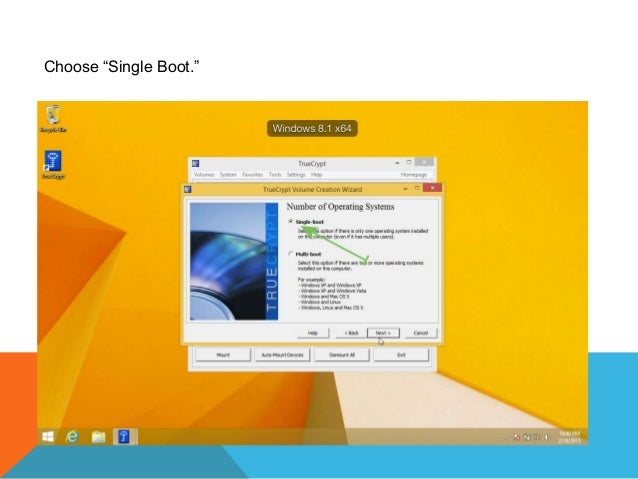

Truecrypt status code#
Since VeraCrypt is currently less popular than TrueCrypt, there are 'less eyes' watching at the VeraCrypt source code changes. If VeraCrypt start changing TrueCrypt fast, they may introduce a few vulnerabilities. They found low-risk vulnerabilities, including some that affect the bootloader full-disk-encryption feature, though there is no evidence of backdoors. The TrueCrypt audit finished on April 2, 2015. I would still choose TrueCrypt for a matter of trust and the "many eyes" theory:Īfter the "TrueCrypt scandal" everyone started looking at the source for backdoors. But with that being said, I would also choose to go with the older option if it is actually better than the newer options. I'm not on the "TrueCrypt is dead" bandwagon, I am just in trying to be progressive, so I would choose a newer "better" option if it is available. That sounds nice and all, but.ĭoes anyone have real world experience using Veracrypt and is it as good as advertised? How does it compare to TrueCrypt?ĭoes anyone have a security reason why they would choose TrueCrypt over VeraCrypt? Any reasons at all why TrueCrypt is preferable to you?
Truecrypt status password#
I know what VeraCrypt claims, I know they say they do more hash iterations of the password to derive the encryption keys. The one more interesting to me is VeraCrypt, and from the research I have done, this looks like the "more secure" option. There is a lot of talk about "TrueCrypt is dead" and it seems there are two forks out there now gaining momentum. It is OK if my VeraCrypt volumes are not compatible with TrueCrypt, and vice versa. In an instance like this, for example, I would suggest trying to mount the backup volume on another machine (before wiping the one the backup is from) to make sure it mounts successfully, and perhaps verifying some of the content while it is mounted there (running a checksum of some of the files there and on the original location and comparing, or perhaps using rsync -dry-run between the two machines, if they can see each other over the network, which would be a relatively efficient way to see if there was any big chunk of the data that looks different or missing on the backup).I am looking to encrypt a few drives of mine, and my ONLY interest is security. A backup is not a good backup until it has been tested, no matter how recently it was made and what checks were made of the backup system/medium beforehand. You should really have tested the backup after making it, as well as checking the disk for physical problems before hand. If you thought that last paragraph was a little preachy I apologise in advance for the next one. When you say mounting the volume "took a couple of attempts", what happened in response to the failed attempts? Any error message or status information output at all? And what commands did you try (and which eventually got you as far as you are now)? This information might trigger a memory in the mind of a passing truecrypt expert, that could be useful to you! Before trying each recovery method it is recommended that you backup the volume (yes: backup the corrupt volume (the truecrypt file, not the apparently corrupt filesystem within it) in case the attempt makes things worse (so you can go back to the bad-but-not-quite-as-bad state in order to try something else). It might be worth mounting the truecrypt volume under Linux, to see if the filesystem checking tools available there can by some fluke do something the other tools you have tried could not but you are most likely out of luck there too.

Unfortunately there is probably very little that you can do. It shouldn't be a bad disk because it's brand new, and I tested it before backing everything up to it. The disk was formatted as NTFS and encrypted using AES and a passphrase.
Truecrypt status windows#
CHKDSK aborted" Windows claims that the disk is "unformatted" but truecrypt see's one partition on it. Windows cannot recover master file table. Windows will attempt to recover master file table from disk. When running CHKDSK, I get the error "Corrupt master file table.

Truecrypt status free#
I have it mounted now (i.e., I know the password and truecrypt has 'decrypted' it and assigned it a drive letter), but chkdisk cannot do anything with it, windows says I have 0 bytes out of 0 bytes free on the partition, and using the "Fix Disk Errors" option on disk properties results in a "The disk check could not be performed because Windows can't access the disk" Once I managed to mount it, I could not view anything inside of it. Once I reinstalled windows, I managed to mount the Truecrypt partition, even though it took a few tries. I made a complete backup of all my data to it, and wiped my hard drive and reinstalled my operating systems. I have a 2 TB external hard drive that I've encrypted using Truecrypt.


 0 kommentar(er)
0 kommentar(er)
